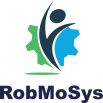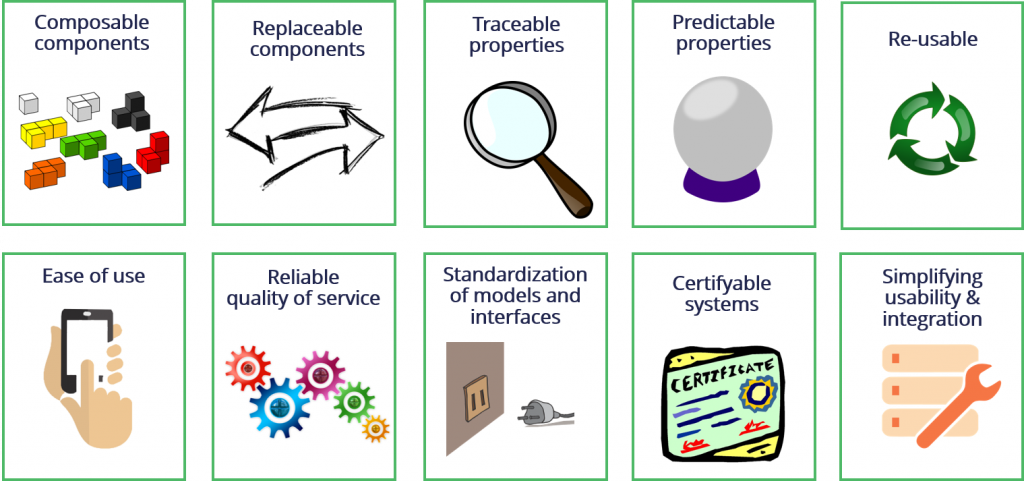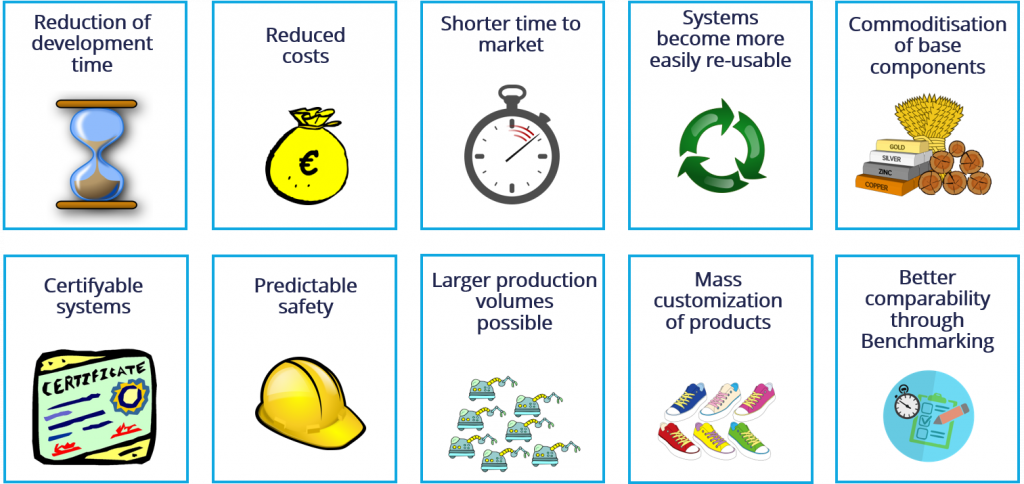User expectations towards the benefits of the RobMoSys approach will strongly depend on the individual situation:
- Role in the robotics value chain
(end-user, system integrator, robot manufacturer, component supplier, etc.) - Field of application
(industry, medical, agriculture, etc.) - Function in the company
(CEO, manager, software developer, engineer, etc.) - Role in the RobMoSys ecosystems
( Behavior Developer, Function Developer, Safety Engineer, System Builder, etc.)
From a technical perspective, the benefits of the RobMoSys methodology and tools will lead to
- simplifying the setup and configuration of hardware and software
- Easy integration and extension of software tool-chains and eco-systems in industrial production setups in a vendor-neutral style
- composable and replaceable components
- predictable and traceable properties
- reusable systems
- ease of use by simplifying the entrance and usability of software components
- reliably quality of service
- standardization of models and interfaces
- certifyable systems
These benefits will translate in a set main incentives of the RobMoSys approach from a commercial perspective:
- Reduction of development time, resulting both in
- reduced costs and
- shorter time to market
- Systems should become more easily re-usable and, as a consequence, should
- Enable larger production volumes of components and systems (using flexible production units)
- Base components could be commoditised
- Systems will become certifyable
- Safety of systems will be predictable
- Easier reconfigurable systems will allow for mass customization of products
- Better comparability of systems and components will be enabled through appropriate metrics (benchmarking)
More detailed examples of technical user stories are explained in the RobMoSys wiki.
You will also find an in-depth explanation on roles in the RobMoSys ecosystem (which differ from the roles in the robotics value chain).
Imagine you have developed software to localize a robot in the environment and you are interested in making it available in robotics.
- You are
- an SME, specialized in a certain domain
- e.g. a component supplier for robot navigation
- You want to
- express your offer with pivotal features such that others can find your component (yellow pages)
- ensure that others can use your component (composability + compositionality)
- explicate non-functional properties of your component
and define its variation points
Imagine you as an integrator are willing to develop an application which needs a localization module and you are interested in integrating the third-party localization software on your intralogistics mobile platform.
- You are
- an SME that wants to access robotics technology and that wants to build a robot application
- You want
- to select components from the market matching your expressed needs
- your application to be correct by construction: you expect that building blocks seamlessly fit together
- to view components as grey-boxes and use them “as-is”: adjust only at explicated variation points within modeled boundaries, do not modify source code.
RobMoSys’ results will
- enable the increase of the quality of the developed component thanks to the use of formal models and validation of functional and non-functional properties supported by industry-grade tools
- enable distribution of robotics software with a description and information about its quality, maturity and usage constraints
- enable an integrator or end-user to integrate a localization module that was developed in a given environment (e.g. ROS, Yarp, SmartSoft, MOOS, Orocos, Reflexxes, MoveIT), in his own proprietary environment thanks to proper bridges between the platform-independent model and the target platform
- increase the quality of the integration thanks to formal techniques implemented in industry- grade tools.


